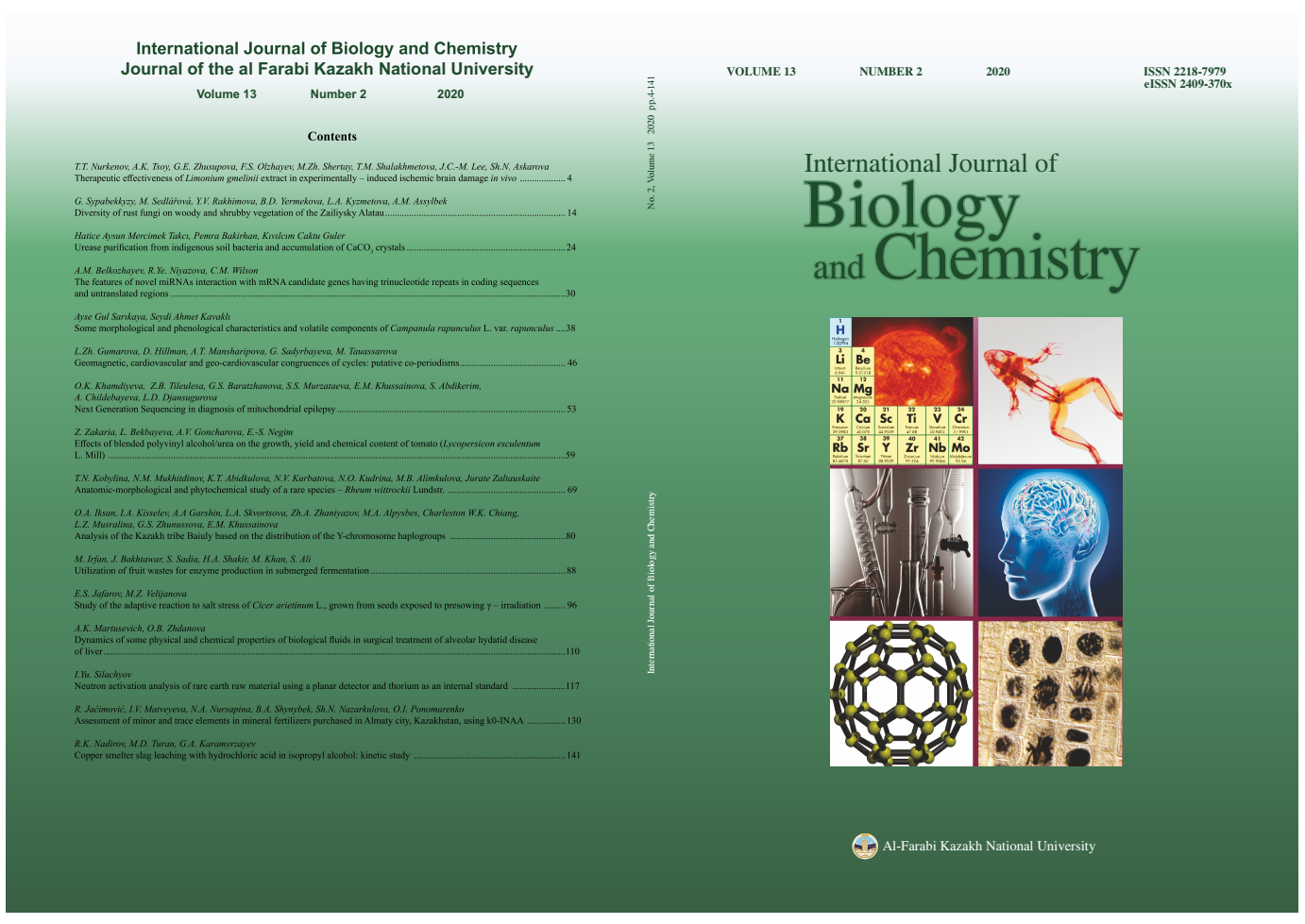Utilization of fruit wastes for enzyme production in submerged fermentation
DOI:
https://doi.org/10.26577/ijbch.2020.v13.i2.11Abstract
This study was aimed to produce enzymes by co-culturing of Bacillus megaterium and Saccharomyces cerevisiae using fruit waste as sole substrate in submerge fermentation. Maximum amylase production (1.208 ± 0.14IU/ml) was observed in fresh melon peel substrate after 48 h. Maximum filter paper activity (0.645 ± 0.02IU/ml) and tannase (0.25 ± 0.01IU/ml) production was noted after 24 h from rotten peach. Sweet lemon peels yielded highest carboxymethyl cellulase (0.435± 0.02 IU/ml) production after 24h of fermentation. Maximum reducing sugars (2.537± 0.07 mg/ml) and total sugars (17.703 ± 0.13 mg/ml) liberation was observed from sweet lemon peels after 24h. Maximum ethanol production (0.56 ± 0.03 mg/ml) was also found from sweet lemon peel after 72h of fermentation. Findings of this study showed that fruit waste had potential for production of bioactive compounds via microbial fermentation
Downloads
How to Cite
Issue
Section
License
ааа





